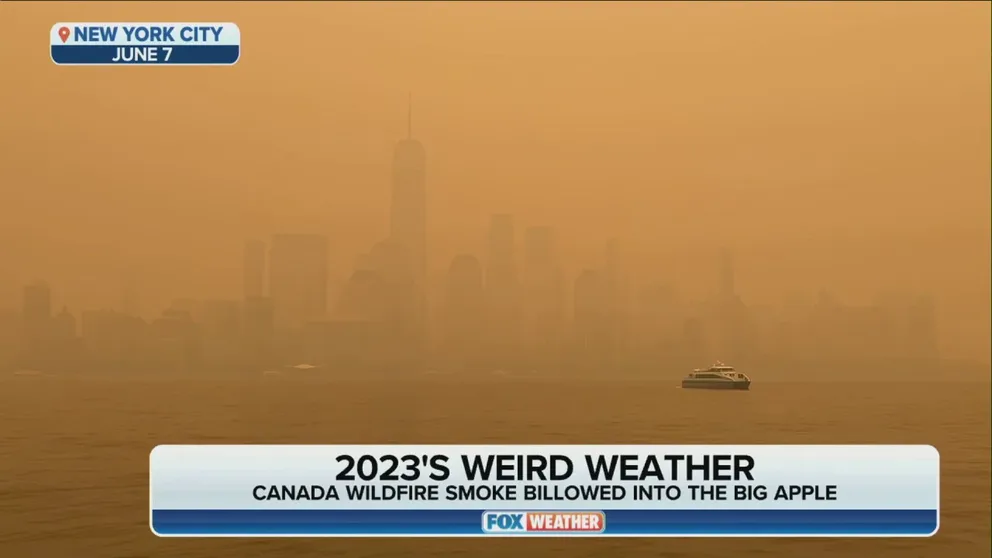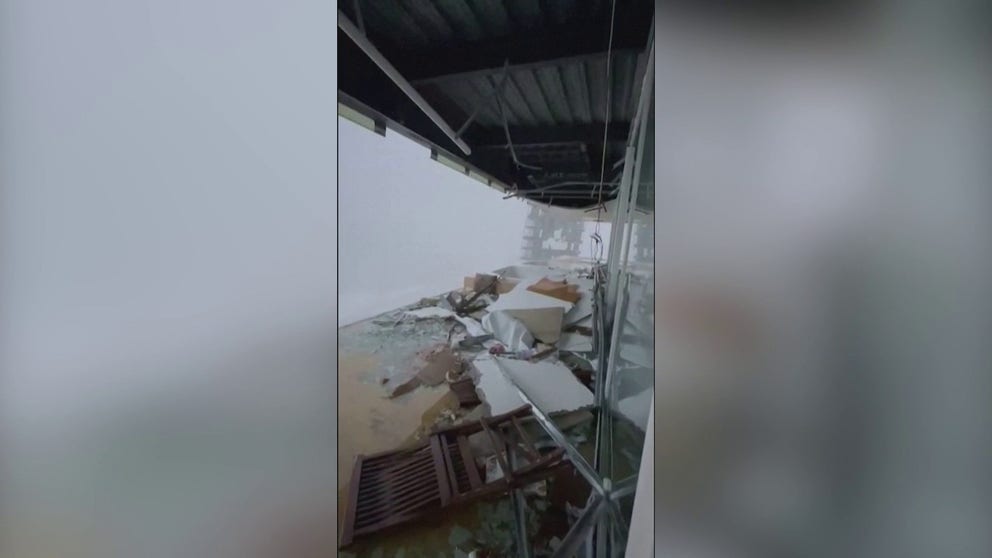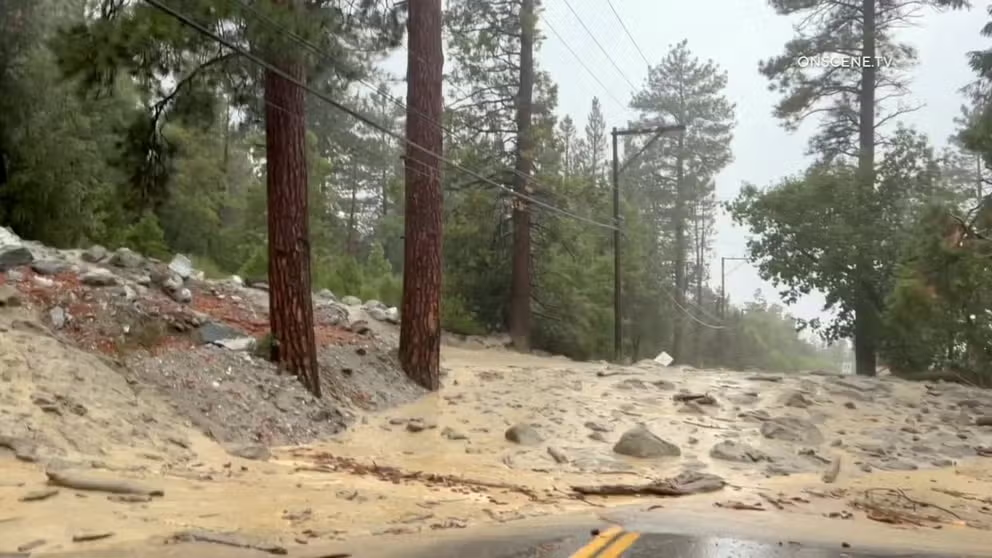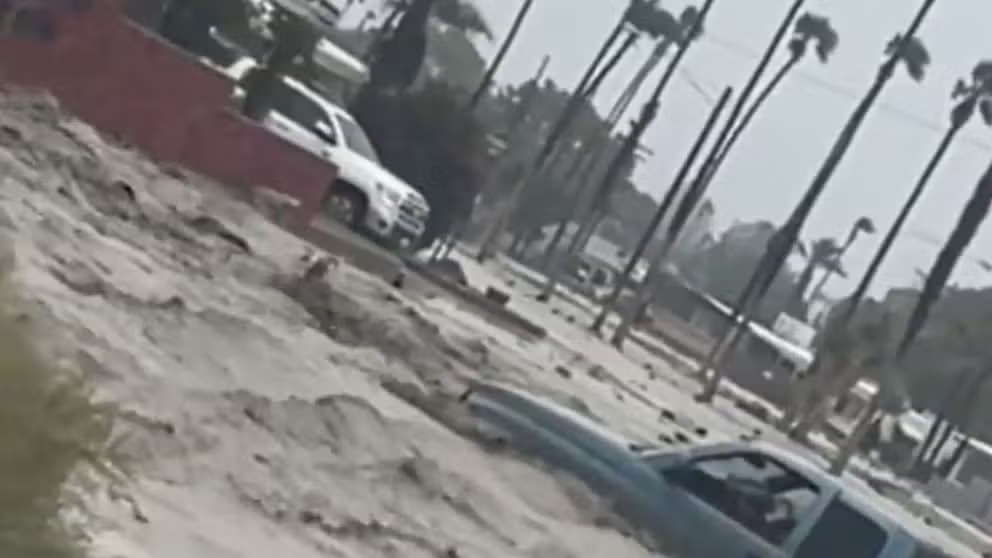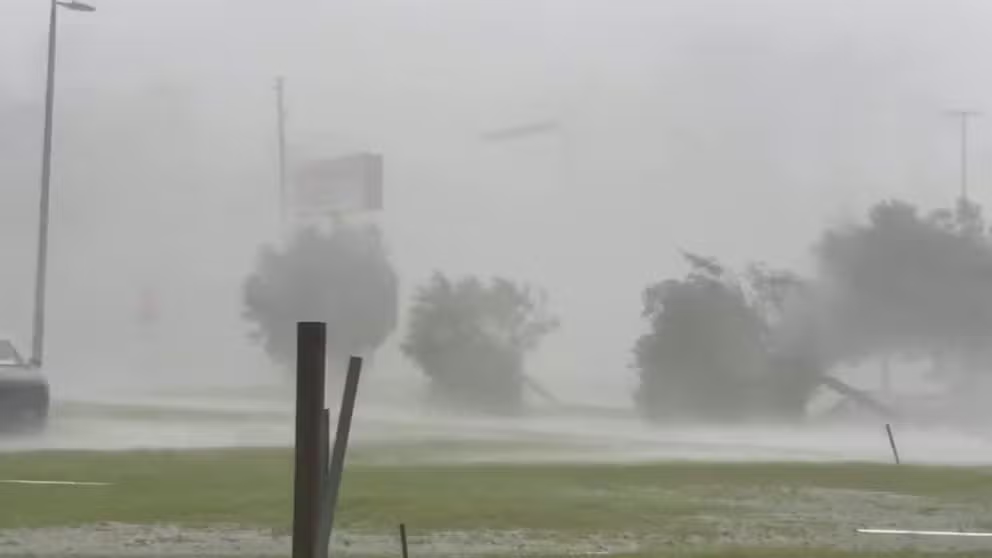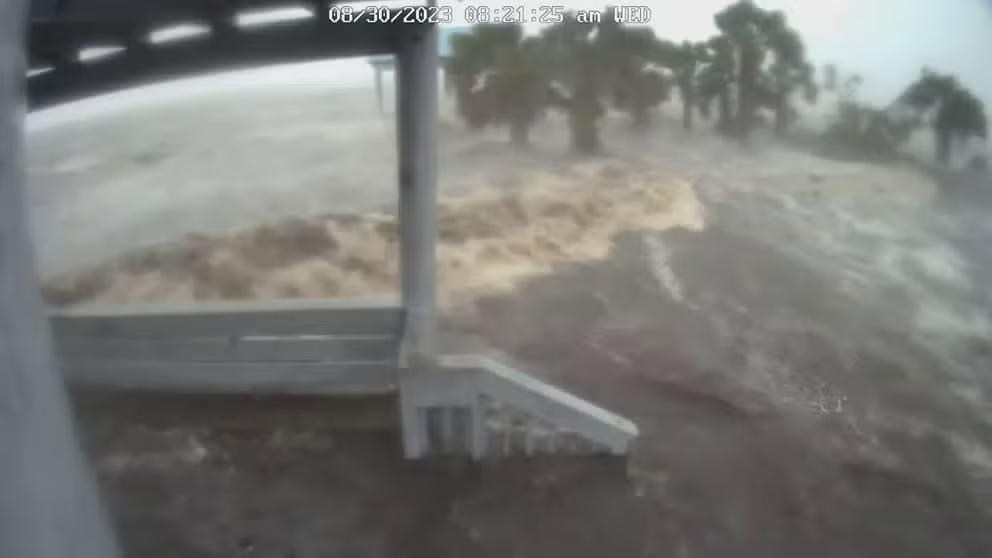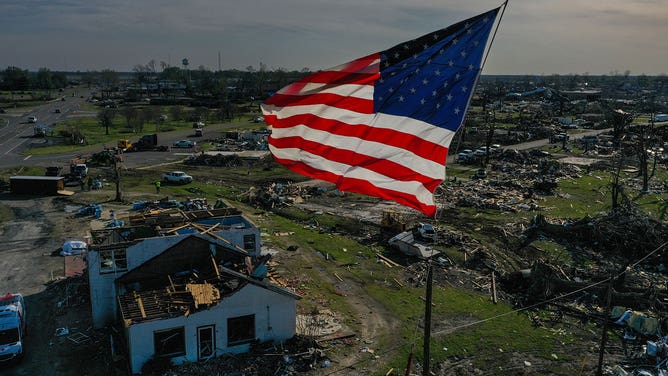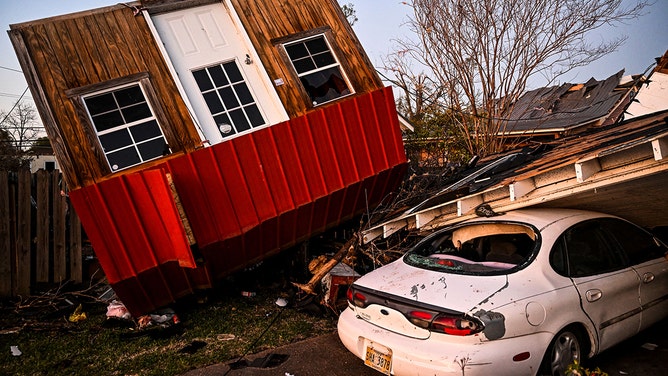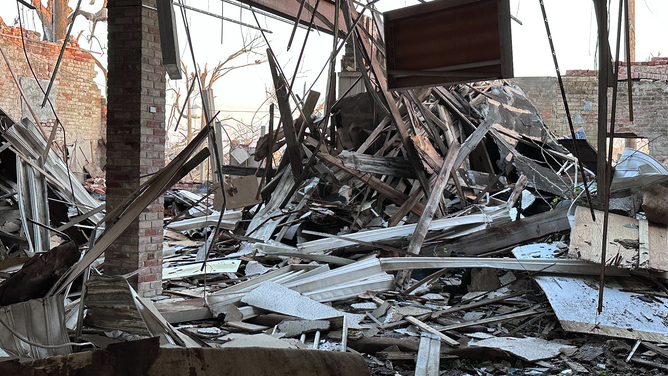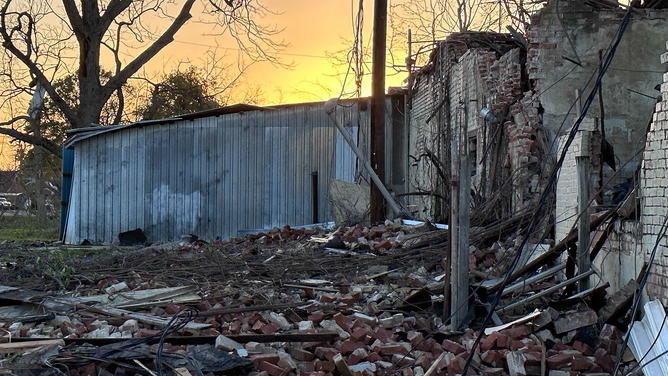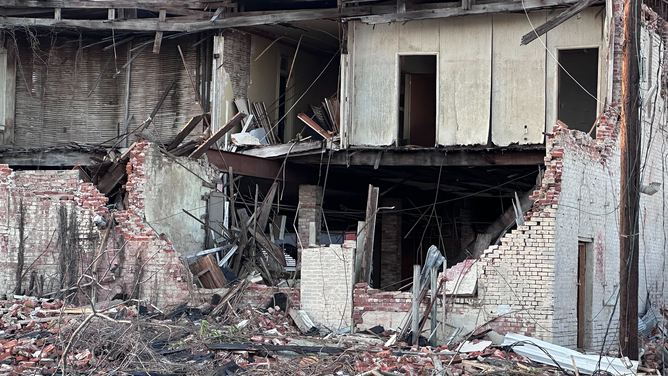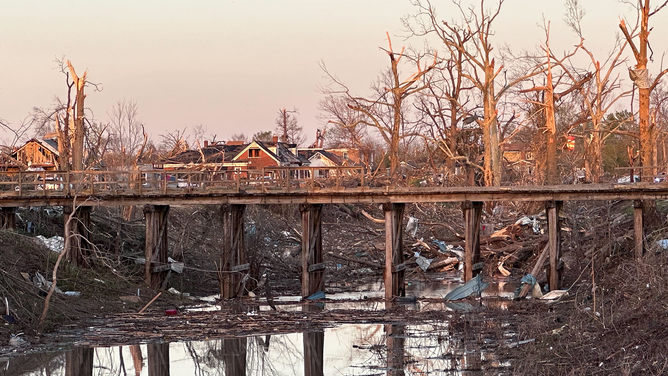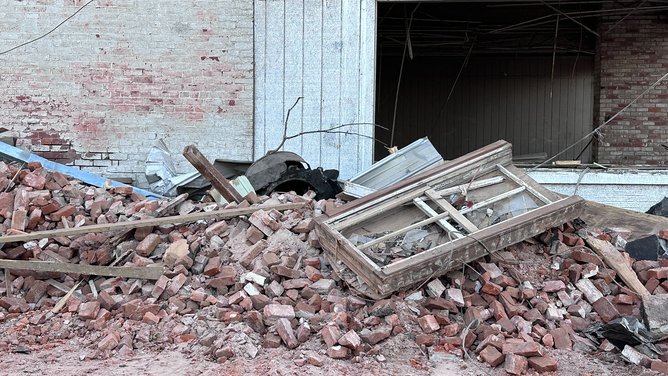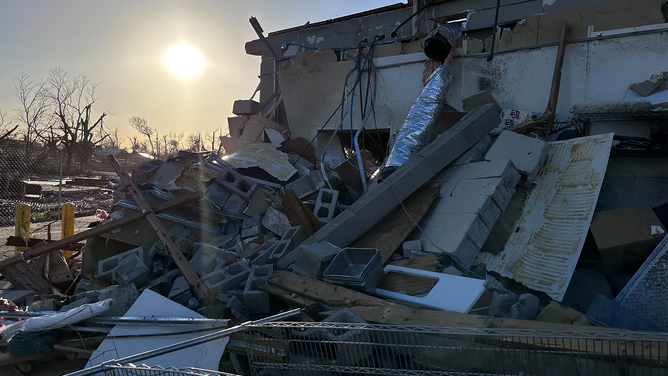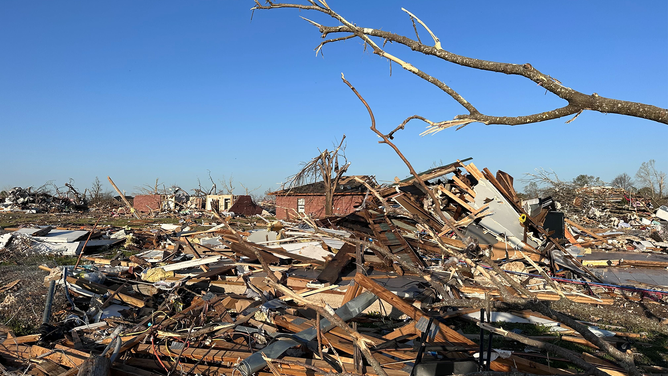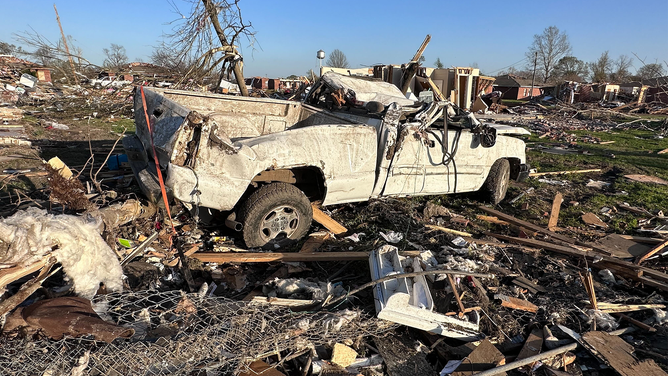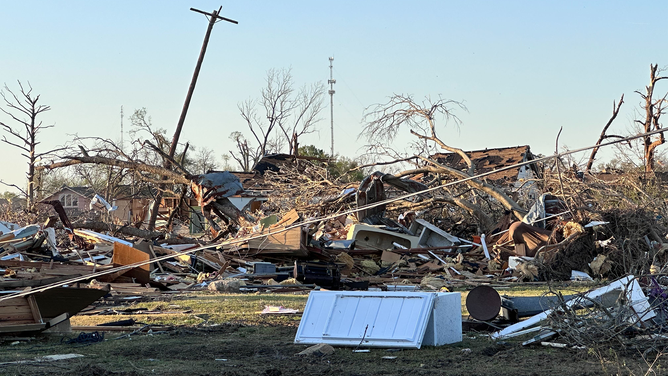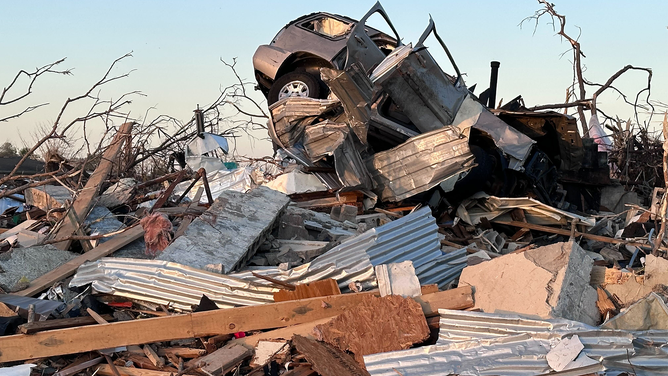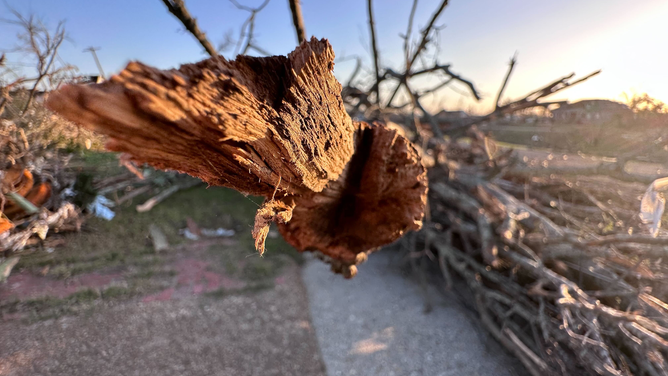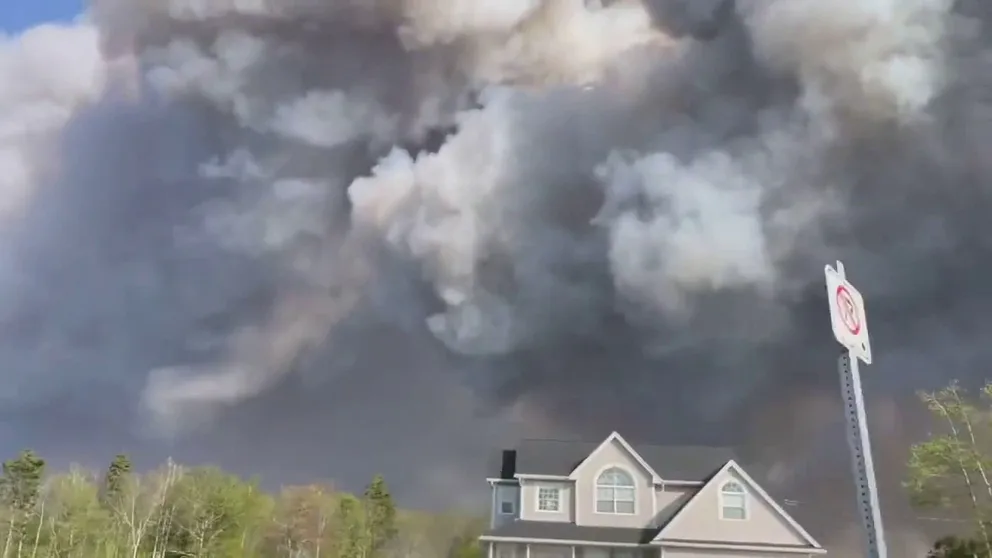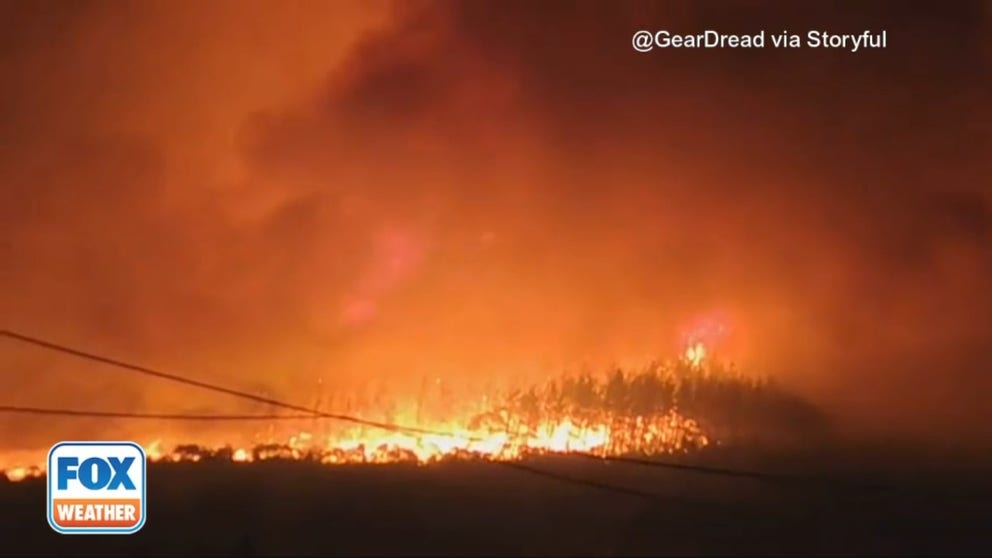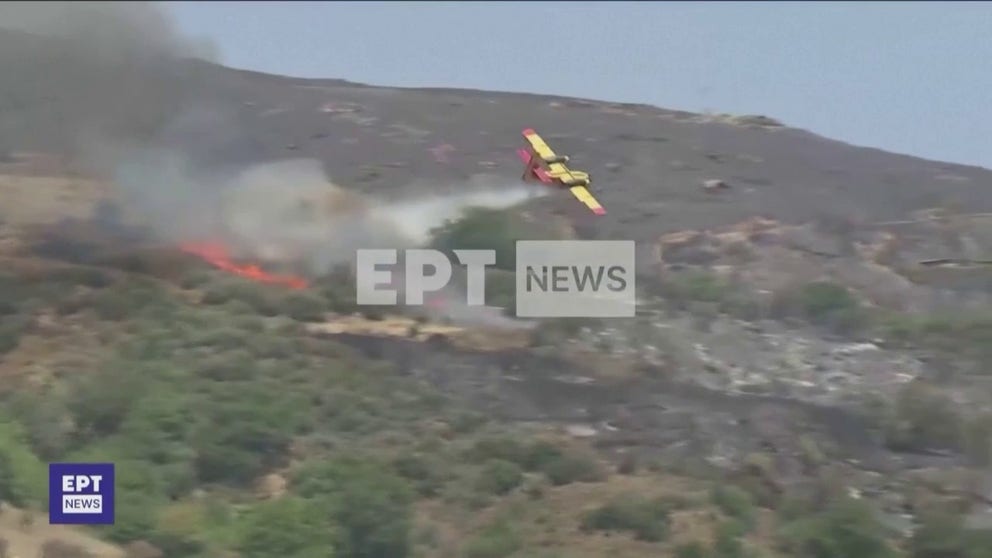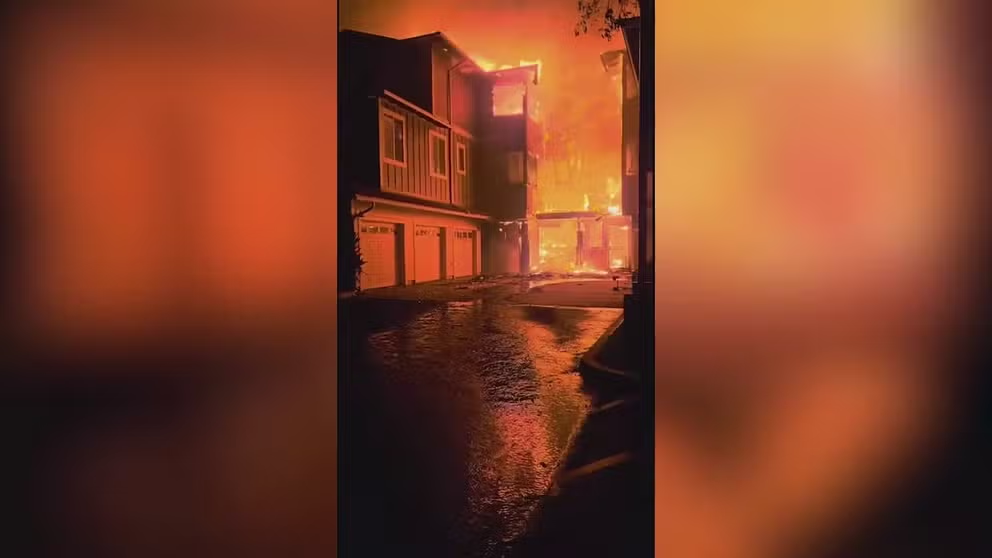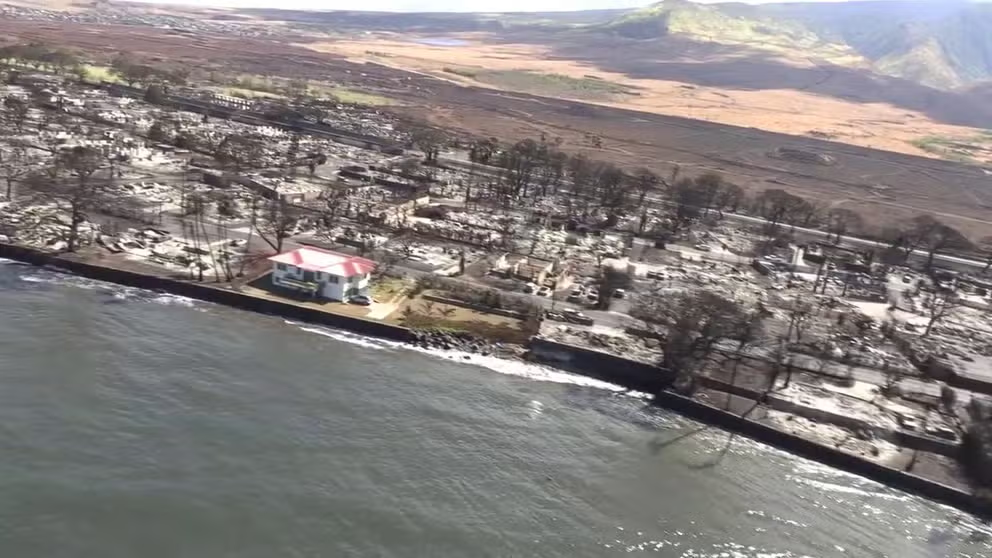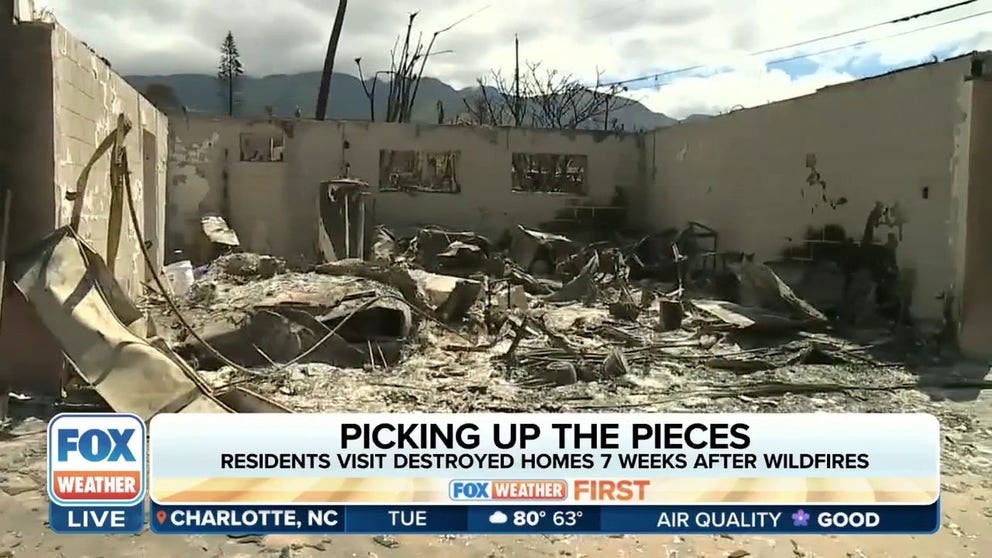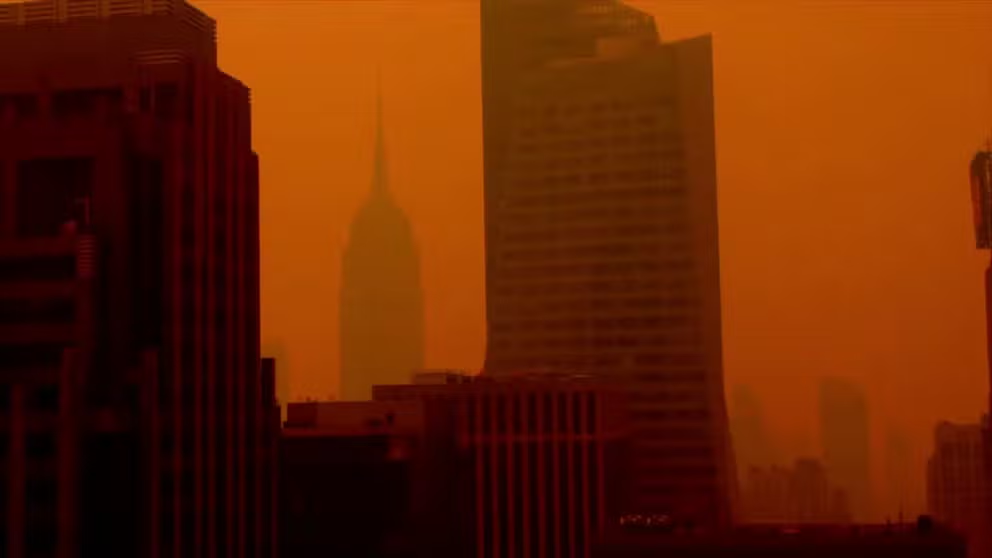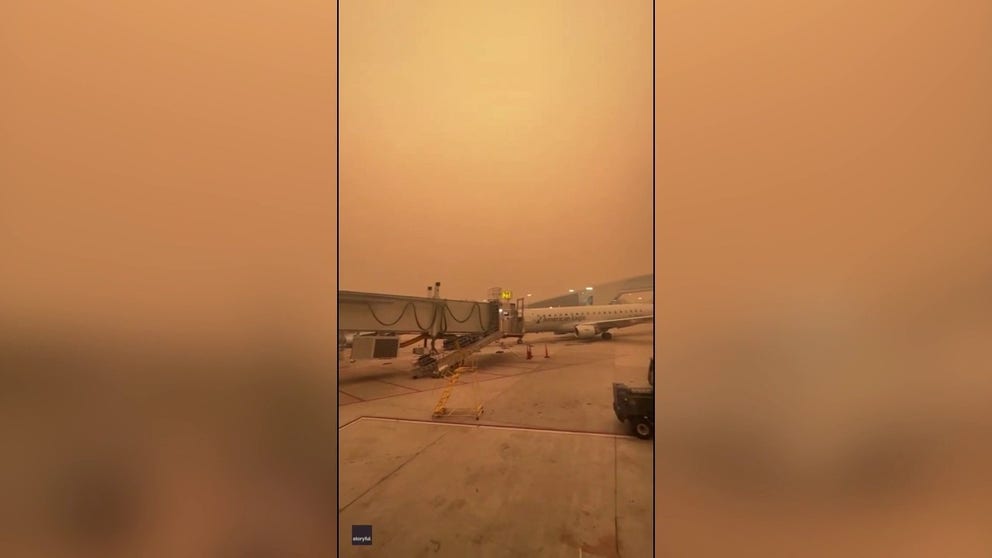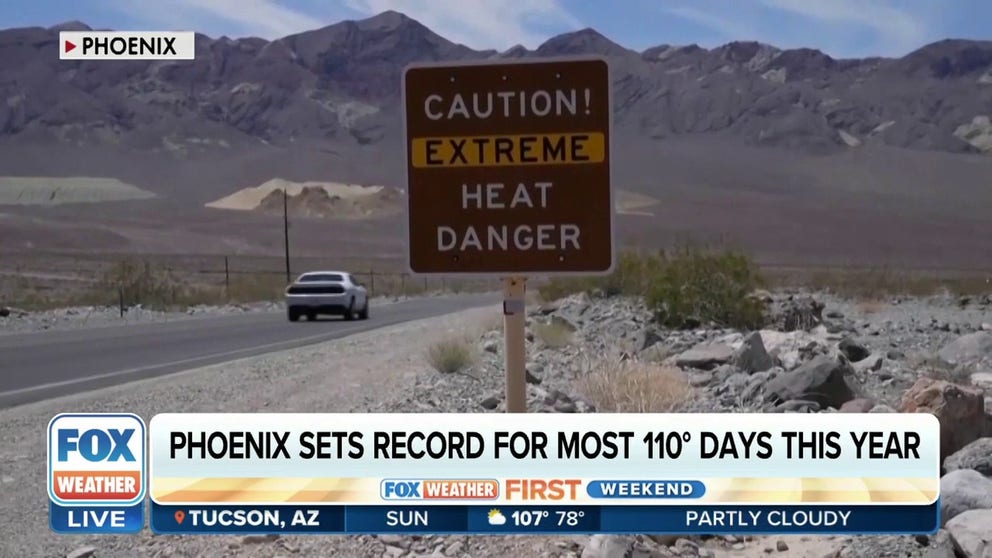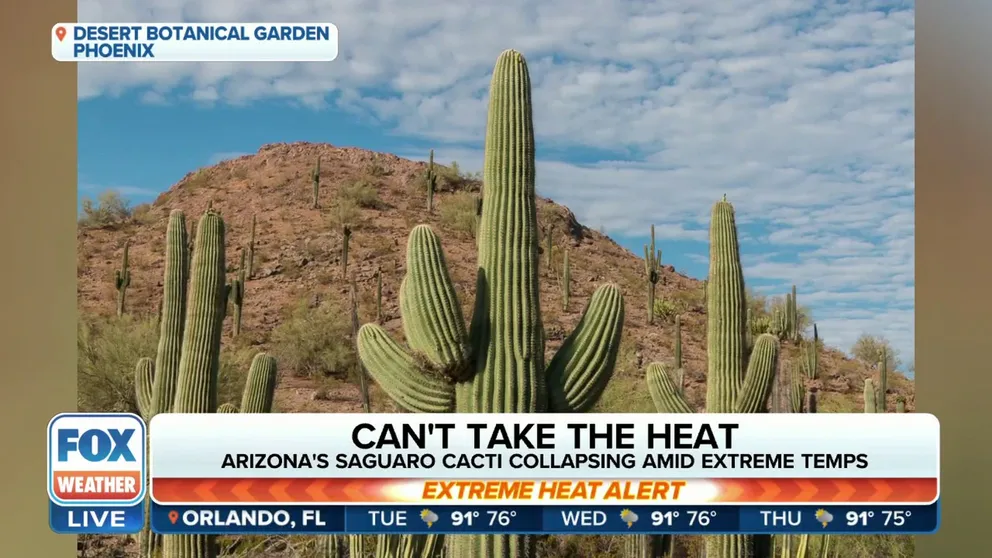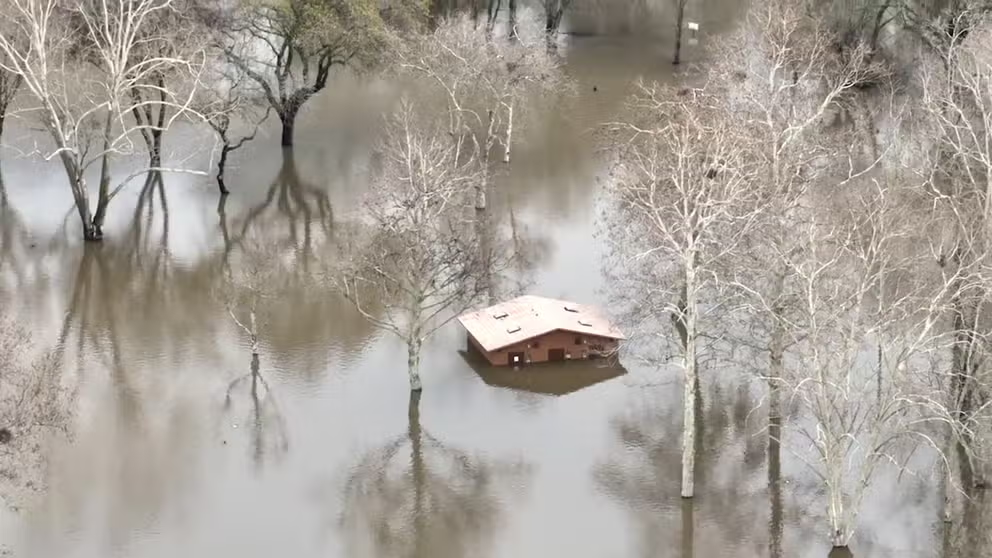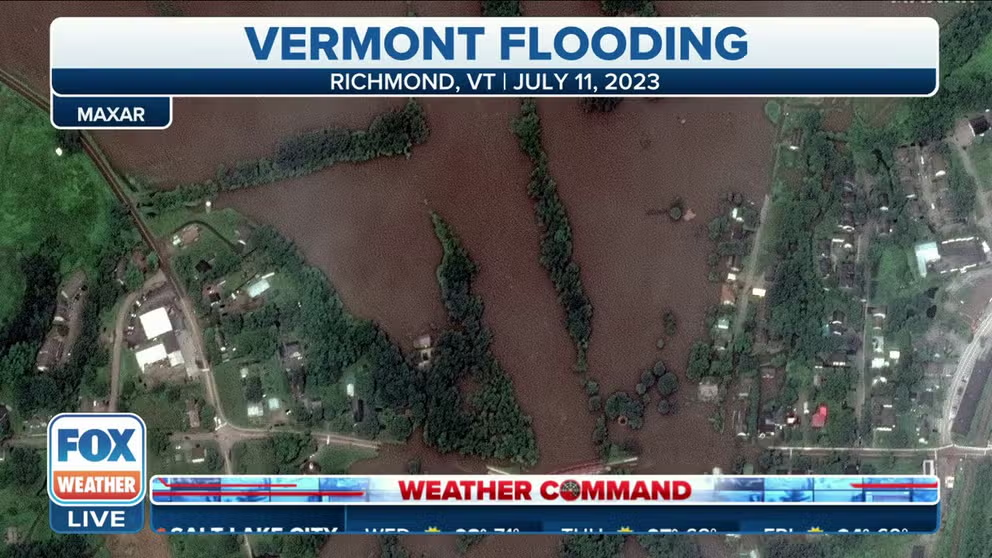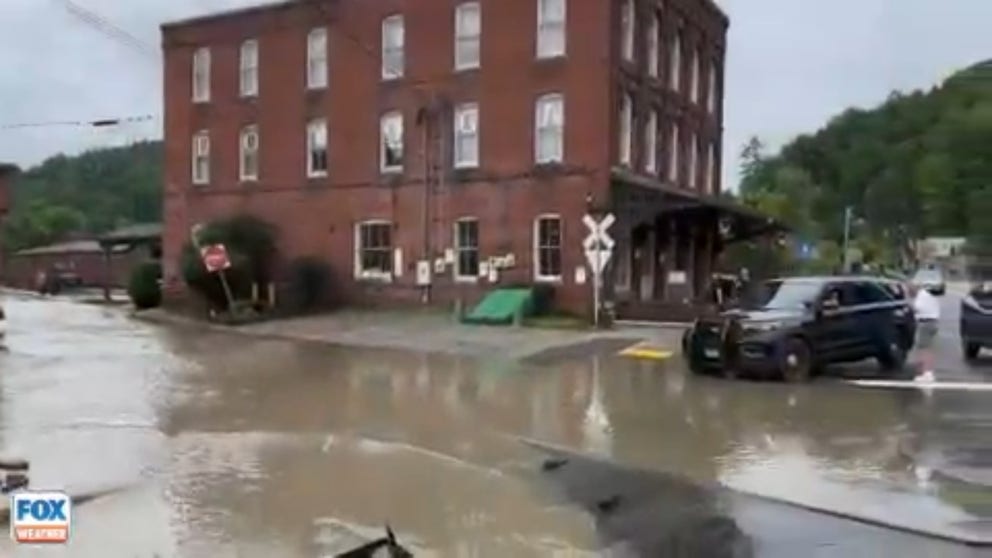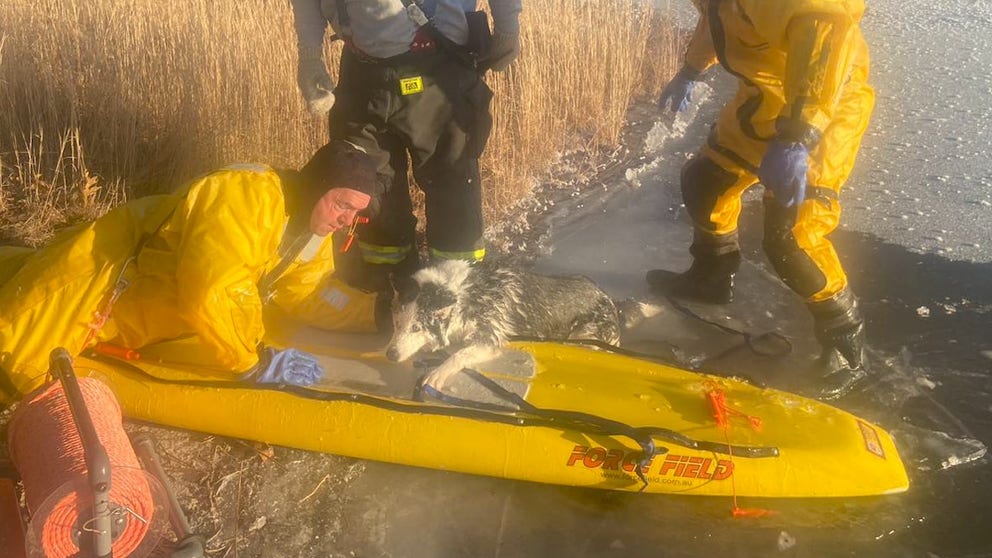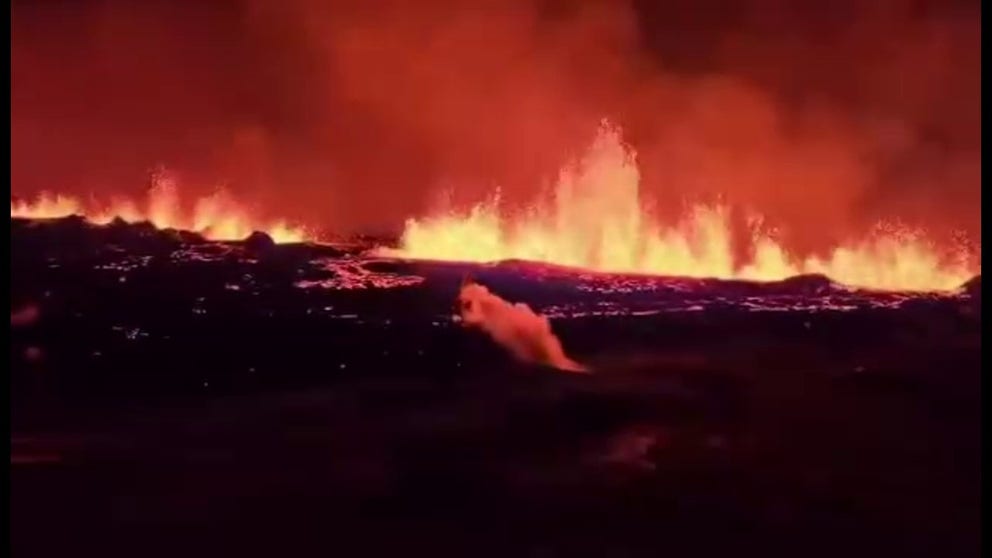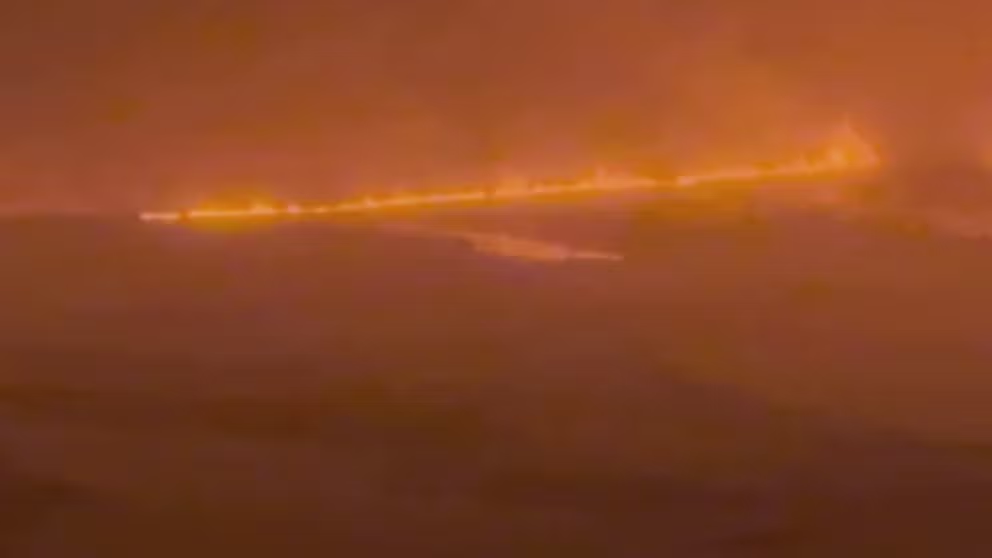Wild weather of 2023: Look back at the year's biggest stories
The year's worst weather events were deadly wildfires that scorched countless acres around the world, record-breaking hurricanes, heatwaves that scorched the Southwest, a polar vortex that froze the Northeast and floods that washed away homes and businesses.
2023's weird weather recap
2023 had its fair share of weird weather, from hurricanes to dust devils to wildfires, smoke and drought, we saw it all.
As people around the world pause to wonder what lies ahead in the new year, it’s difficult not to think about what the past 365 days have brought us. There have been a lot of triumphs in the world of weather and science this year. There have also been numerous disasters that made headlines in 2023.
Among those monstrous weather events were deadly wildfires that scorched countless acres around the world, record-breaking hurricanes, heatwaves that scorched the Southwest, a polar vortex that froze the Northeast and floods that washed away homes and businesses.
Here are some of the biggest weather stories of 2023.
Historic hurricanes
It was a very busy hurricane season in both the Pacific and Atlantic oceans this year. For the most part, they stayed far out to sea and didn't affect land. However, a few did make direct hits and left a catastrophe in their wake.
Hurricane Otis - Mexico
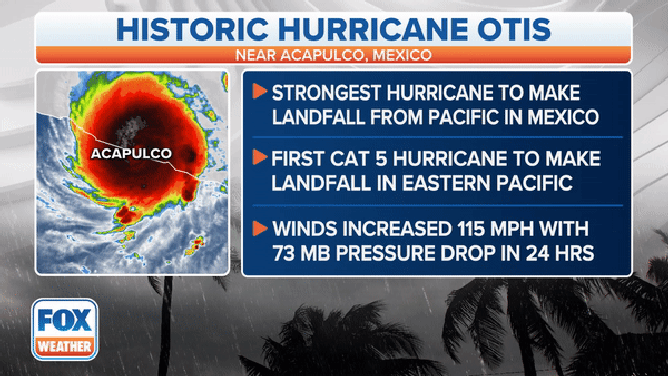
A graphic showing what made Hurricane Otis' landfall near Acapulco, Mexico, historic.
(FOX Weather)
Hurricane Otis dominated the headlines in October after the hurricane made landfall near Acapulco, Mexico.
The "nightmare scenario" began when the storm experienced nearly unprecedented explosive development in a matter of hours, strengthening from a Category 1 to a catastrophic Category 5 hurricane, catching about 1 million people in the storm’s path off-guard.
Acapulco survivor surveys Hurricane Otis' devastation
As the ferocious Category 5 Hurricane Otis storm made landfall in the southern state of Guerrero, Jaime Villanueva and his friend, Barbara, found themselves seeking refuge on the 21st floor of the Solar Ocean Hotel.
Dozens of people were killed, and widespread damage was reported across the region, with several hotels in the popular travel destination of Acapulco receiving significant damage.
Hurricane Otis is now the most powerful hurricane to ever strike the Pacific coast of Mexico.
Hurricane Hilary - California
Watch: California hillside collapse and surround fire house after Hilary
Hurricane Hilary flooding rain triggered a landslide that surrounded San Bernardino County Fire Station 99 in Forest Falls, California, trapping firefighters.
Hurricane Hilary reached Category 4 strength as it approached Mexico and the U.S., and made landfall along the southern Baja California Peninsula on Aug. 20 as a tropical storm.
Hilary’s largest impacts in the U.S. were felt across Southern California and the Desert Southwest with flooding rains, mudslides and funnel clouds. Because of the wide-ranging impacts, states of emergency were issued in California and Nevada – the two states where the worst impacts were seen.
Tropical Storm Hilary rainfall leads to flash flooding in Thousand Palms, California
Only a few inches of rainfall caused flooding in the Coachella Valley of Riverside County, CA on Sunday.
Winds in parts of Southern California topped 80 mph, and several roads needed to be closed due to mudslides and rockslides.
As if a tropical system wasn’t enough, Southern California was rocked by a magnitude 5.1 earthquake as the storm brought catastrophic effects to the region.
Hurricane Idalia - Florida
Watch: Powerful winds from Hurricane Idalia send trees, debris flying through the air in Perry, Florida
Dramatic video recorded in the eyewall of Hurricane Idalia shows trees and other debris flying through the air as the Category 3 hurricane was making landfall with 125 mph winds early Wednesday morning.
Florida, Georgia and the Carolinas in the Southeast were left picking up the pieces after Hurricane Idalia made landfall along Florida’s Big Bend region as a major Category 3 hurricane with winds of 125 mph on Aug. 30.
The deadly storm made a historically-rare landfall in Keaton Beach. It spawned tornadoes, brought down trees and power lines and ripped the roofs away from homes and buildings across the region.
Watch: Ferocious Hurricane Idalia makes landfall in Keaton Beach, Florida
Dramatic video shows a massive storm surge and major flooding as Hurricane Idalia made landfall in Keaton Beach, Florida, early Wednesday morning with winds of 125 mph.
First responders needed to conduct several water rescues, and President Joe Biden approved Florida Gov. Ron DeSantis' request for a major disaster declaration in affected Florida counties.
The FOX Forecast Center said Idalia was the strongest hurricane to strike the Big Bend area – especially near Cedar Key – in 125 years, dating back to an unnamed 1896 storm.
Tornado brings death, destruction to Mississippi town
The town of Rolling Fork, Mississippi, was leveled in March when a large tornado carved a path of destruction across part of the state.
The twister that killed more than a dozen people was rated EF-4 on the Enhanced Fujita Scale by the National Weather Service and had peak winds of 195 mph. The tornado spared very little that was in its path, leading one resident who survived the storm to describe the scene as an "apocalypse."
Despite the devastation, stories of survival revealed the heroic actions taken by Tracy Hardin. She was working at a restaurant when the tornado hit. A panicked employee and flickering lights signaled the cyclone’s approach. Hardin sprang into action, shouting for employees, customers and her husband to seek shelter in a walk-in cooler. That cooler was the only thing left standing at the restaurant after the storm. Her quick thinking saved nine lives. Hardin received the FOX Nation Weather Award for Courage in November.
Mississippi woman honored for saving 9 lives during EF-4 tornado in Rolling Fork
When a powerful, EF-4 tornado was racing toward her community of Rolling Fork, Mississippi in March, Tracy Harden’s quick thinking helped save the lives of nine people. She is now the first-ever recipient of the FOX Nation Weather Award for Courage.
Deadly wildfires around the world
Millions of acres of land around the world were scorched due to hundreds of wildfires that turned the sky black and orange, forced countless residents from their homes and forever changed pristine landscapes.
Canada wildfires
Watch: Thick smoke from wildfires fills the sky above Nova Scotia, Canada
Tense video shows thick, black smoke filling the sky above Nova Scotia, Canada. Thousands of people have been forced to evacuate and hundreds of buildings have been damaged or destroyed by the flames.
Canada was hit especially hard by wildfires that raged across the entire country.
According to Natural Resources Canada, more than 6,600 wildfires burned nearly 45.5 million acres of land in 2023.
In August, wildfires forced the evacuation of 20,000 people living in the Northwest Territories capital city of Yellowknife.
Several wildfires also erupted across Quebec, with many blamed on lightning strikes from severe weather that produced thunderstorms across the province.
Europe wildfires
Battle against Tenerife wildfire continues in Spain
Residents of several communities in Tenerife, Spain – including Arafo – were allowed to return home on Monday, as firefighters continued to battle the large wildfire burning on the island, the local emergency service said.
Europe also experienced wildfires this year, with notable blazes burning out of control in places like Spain, Italy and Greece.
Thousands of people were forced to flee the Greek island of Rhodes as fires raged across the region while temperatures soared this summer.
Raging wildfire forces evacuations in northern Greece
Greek authorities evacuated at least five villages near the northeastern border with Turkey on Saturday, where a large summer wildfire was burning out of control.
Hundreds of firefighters on the ground and in the air worked to contain and extinguish the fires, and thousands of acres went up in flames.
Firefighters from across Europe helped with firefighting efforts while thousands tried to escape the flames.
Video captures moment Greek firefighting airplane crashes while responding to wildfire
A terrifying video captured the moment when a Greek firefighting airplane that was responding to a wildfire in Greece crashed and burst into flames on Tuesday, July 25, 2023.
Flights to Greece were canceled, and airplanes were used to evacuate residents and tourists to other locations while the fires burned.
On the island of Evia, a terrifying video showed a firefighting airplane that crashed when one of its wings clipped some trees and caused it to plunge into a mountain. The two people on board were killed.
Hawaii wildfires
Houses engulfed in flames as deadly wildfire rages in Lahaina
The town of Lahaina on Maui Island was hit by wind-driven wildfires, causing extensive damage, killing 55 people as of Friday morning, August 11, 2023.
In August, Hawaii experienced the deadliest wildfire in modern U.S. history when at least 100 people were killed in the town of Lahaina on the island of Maui.
New video of damage from Lahaina brush fires
An aerial video of damage in Lahaina, Hawaii, from deadly brush fires.
The National Weather Service office in Honolulu issued Fire Weather Warnings before the fires.
Emergency managers have been accused of failing to use all their tools to warn residents of the unfolding disaster. Officials said they didn't use outdoor warning sirens because they feared residents would have fled uphill toward the flames rather than toward the ocean for safety.
Lahaina residents return to homes nearly two months after deadly wildfires
Some Lahaina residents were allowed to return to what remains of their homes for the first time since deadly wildfires scorched the landscape in Hawaii nearly two months ago, and many say they don't know what's next for them as they sift through piles of debris.
Residents were allowed to start returning to their homes one month after the disaster.
Canadian wildfire smoke invades US
Timelapse shows New York City turning red amid wildfire smoke
Canadian wildfire smoke has left many cities, including New York City, with red, hazy skies this week.
As wildfires raged in Canada at the start of the summer, smoke from the blazes invaded the U.S., turning day into night and leading to unhealthy air quality conditions in cities across America.
In June, smoke engulfed major cities along the Interstate 95 corridor from Boston through New York City, Philadelphia and Washington.
The Big Apple experienced its worst air quality ever recorded, and visibility dropped to a half-mile when skyscrapers in Manhattan became shrouded in the dense smoke.
Pilot shows reduced visibility at New York airport amid ongoing wildfire smoke crisis
A pilot who was due to fly out of New York’s LaGuardia Airport on June 7 recorded video showing the surreal orange haze encompassing the facility.
The sky in the city turned an eerie orange color, and people with health issues were urged to remain indoors until the smoke cleared out.
The sky in Florida turned from blue to a milky haze in October when smoke from Canadian wildfires made its way all the way to the Sunshine State, reaching as far south as Miami.
Hundreds dead in Southwest summer heat wave
Phoenix sets record for most 110 degree days
This year goes into the record books for Phoenix. The city has hit a record 54 days over 110 degrees for the year. Part of the run includes the record breaking stretch of 31 consecutive days of 110 degree highs in July. The Valley of the Sun is also on target to have the hottest three months since recordkeeping began in 1895.
It was a deadly summer across the Southwest as the region spent weeks with temperatures well above 100 degrees from Arizona to Texas.
According to the Maricopa County Department of Public Health in Arizona, 579 heat-associated deaths have been confirmed since April 11, 2023, with 56 deaths still under investigation. The number of confirmed deaths is well above last year’s record of 435 deaths. It also marks the seventh consecutive year of record heat-related deaths since the county began keeping track in 2006.
Prolonged heat wave, lack of rain in Arizona scorching cacti
The record heat is killing off Arizona's saguaro cacti. Kimberlie McCue from the Desert Botanical Garden joins FOX Weather from Phoenix to talk more about the cacti.
Phoenix also saw its hottest month ever recorded in July, with an average temperature of 114.7 degrees.
The historic heat wave also baked Texas, with cities across the Lone Star State reporting triple-digit temperatures for days on end.
Atmospheric River Storms swamp the West
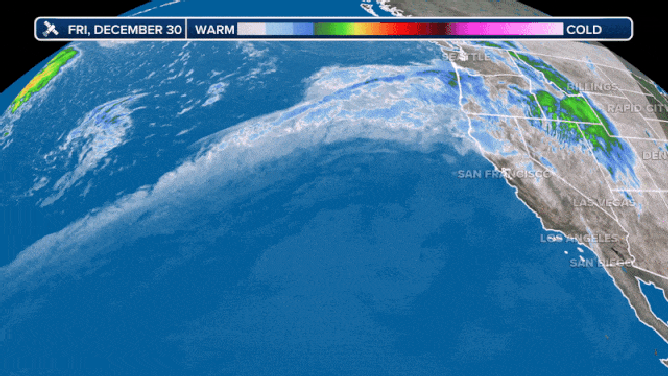
Parade of atmospheric rivers into California
(FOX Weather)
The beginning of 2023 was a destructive and deadly time for the West, with California being hit hard by a series of atmospheric river storms that brought relentless rain and flooding to lower elevations while mountain communities saw record-breaking snowfall totals that yanked the state out of a historic drought.
More than 20 people were killed during the storms, and Biden approved both a major disaster declaration and an emergency declaration for the Golden State.
Atmospheric river unleashes deadly rainstorms on California: See the widespread flooding and destruction
An onslaught of atmospheric river storms has brought torrential rain and life-threatening flooding, mudslides and debris flows to many parts of California.
Most of California saw several feet of rainfall over a period of several weeks. This led to numerous reports of flooding and mudslides washing away roads and vehicles and forcing thousands of residents to flee while the region was battered.
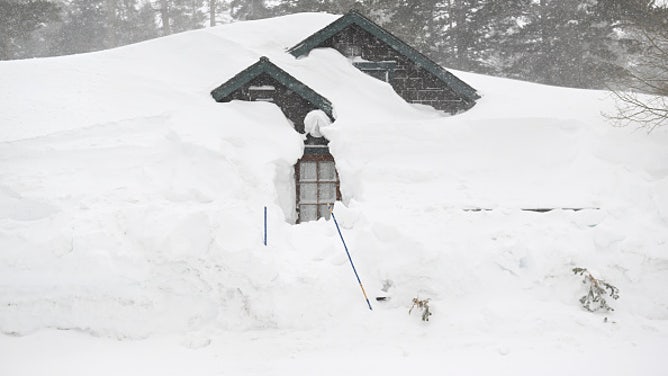
Mammoth Mountain California March 8, 2023-A cabin its buried in snow at Tamarack Lodge in MammothWednesday. The lodge at 8,600 feet is expecting another 100 inches of snow this coming week. (Wally Skalij/(Los Angeles Times via Getty Images)
(Getty Images)
Some parts of California's Sierra Nevada mountain range, such as Mammoth Mountain, were buried under nearly 60 feet of snow. Residents living in the higher elevations of the range in San Bernardino County were trapped for weeks when storm after storm dropped feet of snow across the region.
New England slammed with historic flooding
Before-and-after satellite images show scope of Vermont flooding
Satellite images taken before and after flooding in Vermont on Tuesday show the true scope of devastation left behind.
Millions of people across the Northeast and New England experienced catastrophic and historic flooding in July, with Vermont experiencing its worst flooding event since 1927.
The city manager in Montpelier issued an ominous warning to residents that a dam in the area was at risk of reaching capacity and being overtopped, sending large amounts of water rushing into the state’s already-flooded capital.
Watch: Catastrophic flooding submerges downtown Montpelier, Vermont
FOX Weather meteorologist Ian Oliver is in Montpelier, Vermont, and recorded jaw dropping video showing the scope of devastating flooding.
New York and Pennsylvania were also hit hard by the flooding in July.
Dozens of water rescues were conducted north of New York City during the deadly flooding, and roadways were washed out after more than a half-foot of rain fell in only a few hours.
Northeast experiences frigid polar vortex
Dog rescued from frozen pond during polar vortex
First responders used a rescue board to venture out on the ice to retrieve
In February, a short-lived but impressive and dangerous polar vortex invaded the Northeast and New England, plunging temperatures across the region into negative territory.
Boston experienced its coldest morning in decades, with a morning low temperature on Feb. 4 of -10 degrees and a wind chill of -39 degrees.
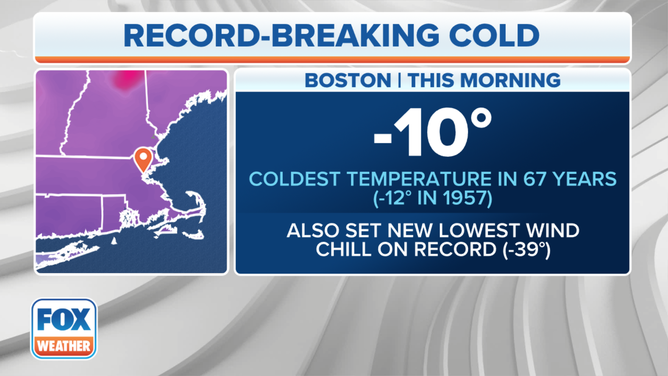
A recorded 10 degrees below zero made it the coldest morning in Boston in 67 years.
(FOX Weather)
That wasn’t even the coldest wind chill.
Frenchville, Maine, recorded a wind chill of -61 degrees.
It was so cold in Maine during the polar vortex that residents reported hearing and seeing trees exploding from the sap and water inside expanding.
Iceland's volcano erupts
Watch: Lava spews from volcanic fissure near Grindavik, Iceland
The Icelandic Civil Defense shared dramatic video of lava shooting from a volcanic fissure near the town of Grindavik after a volcano erupted on Monday night.
Weeks of earthquakes in Iceland culminated in an explosive volcanic eruption just north of the seaside town of Grindavík in December.
In early November, the Icelandic Meteorological Office (IMO) reported a swarm of thousands of earthquakes that raised fears of an impending volcanic eruption. Those fears then prompted officials to evacuate the town of Grindavík and the popular tourist destination Blue Lagoon closed its facilities.
Watch: Airline passenger gets bird's-eye view of Iceland volcanic eruption
A tourist on a flight arriving at Iceland's Keflavik airport captured dramatic video of a volcano eruption that began near the town of Grindavik on Monday night.
Over the following days and weeks, evacuated residents were briefly allowed to return to their homes to gather what they could before being told to flee again as large cracks began to develop through the center of town.
On Dec. 18, a strong earthquake rocked the region, and the volcano erupted about an hour later. Videos and photos from the area showed the power of the eruption, and an airline passenger arriving in Iceland was able to capture spectacular footage of the eruption from the air.
